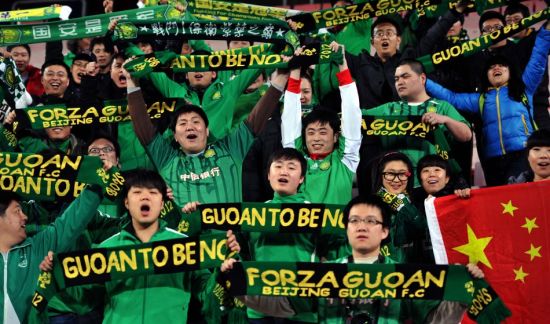Trend #1:Overseas mergers and acquisitions are expanding.
As we have learned from 2015, the interest of Chinese investors is mainly in the European sports business. One of the important reasons is that the “big five” are the most popular leagues across the world. They present high-level lineups, successful business models and active user engagement from China.
In the upcoming years, Chinese capital will continue to seek to acquire European football clubs, because China wants to buy, and foreign clubs would like to sell.
Of course, China has seen a rapid development in its football industry with the success of FC Guangzhou Evergrande being a prime example. However, there are much greater expectations for the Chinese sports market. The more direct way is to purchase competitive foreign clubs.
It is not so easy for clubs to achieve a greater share of the European market, because the basic market layout remains unchanged. Therefore, to generate more revenue, the alternative is to expand into new markets, such as China.
As the Chinese sports platform Morningwhistle says, buyers are being sought for at least five football clubs in Spain, the Netherlands, Portugal and the Czech Republic.
Trend #2: International Intellectual Property (IP) is putting down roots in China
Wang Jianlin is the 61-year-old CEO of Wanda, the company which started to create a sports kingdom at the beginning of 2015. The company has in the meantime taken a 20 percent stake in Spanish soccer giant Atlético de Madrid, purchased the World Triathlon Corporation,acquired Infront Sports & Media and set up a global sports headquarter in Guangzhou.
Wanda has built up a sports industry chain that covers events operation, an athletics agency, sports marketing and broadcasting rights.
The sports giant has said that when they consider an overseas acquisition, the question has to be asked whether the future sports business can be moved successfully into the Chinese market. Their first attempt will be the hosting of Ironman events in Xiamen beginning this November.
Similarly, other Chinese investors consider carefully which events will suit China. As more Chinese capital flows into overseas sports markets, China will welcome more visits from foreign coaches, international player transfers, youth training resources and popular events.
Trend #3: More local IP events emerging.
Most popular international events have a history of 50 to 100 years. However, Chinese IPs like the Chinese Super League and China Open are less than 20 years old.
Acquisition is certainly the best way to seize market share, but it won’t bring a boom to the sports industry across China. In the long run, with more overseas resources divided between Chinese tycoons, acquisitions will become even more difficult than before. Therefore, the solution is to create localized sports IPs by taking advantage of what has already been acquired.
As Liu Jianhong, the content chief of Le Sports, has stated, they will launch more events like ShakeRun, an intellectual property event which attracted thousands of participants.
Also, according to recent attendance research by KPMG, the Chinese Super League has experienced the highest growth in average attendances of all the competitions analysed. A 16.7% increase compared to the 2014 season confirms that not only sponsors and investors but also supporters have regained their confidence in the local competition.
Local IPs in China have begun to display their own special charm in recent times. What China needs is patience from clubs, investors, sponsors and supporters.
Proofread by John Devlin


